In today's Chartology Report I would like to clear up a misconception about rising wedges and flags. I have gotten more negative e mails from folks that assure me there is no such thing as a bullish rising wedge or flag. I'm repeatedly told to go back to charting school to learn my lesson. These type patterns are missed by 95% of chartists because they supposedly don't exist and if they do exist they can't be trusted. Keeping an open mind in the stock markets is the first lesson to learn. That means anything is possible regardless of what is taught by the so called experts. I've been following these two types of patterns for many years and find that are just as reliable as any another consolidation or reversal pattern.
A bullish rising wedge or flag forms in an uptrend. Instead of pointing down into the uptrend these type of patterns point up into the uptrend. A typical consolidation pattern, like a bullish falling wedge or flag, points down in an uptrend which everybody sees and is accepted as the norm.
I have found out through many years of following these bullish or bearish wedges or flags that they tend to show up in fast moving markets. When a stock is in a strong move up you can see series of these patterns that from one after another until a top is reached. The opposite is true in a downtrend where you can have a series of bearish falling wedges or flags form. They are also like any other consolidation pattern that generally shows up as a halfway pattern.
Let’s look at a few charts that shows a very bullish move up that is made of several bullish rising wedges or flags. PCLN is a perfect example of what I've described above. Note the inverse H&S bottom that formed at the end of 2011 at roughly 450 or so. Note the three red bullish rising patterns that made up that impulse leg to the double top at 775 area. The move was so strong that the bulls never let the correction take on the shape of a normal consolidation pattern that forms pointing down in to the uptrend or a sideways type pattern such as a triangle or rectangle.

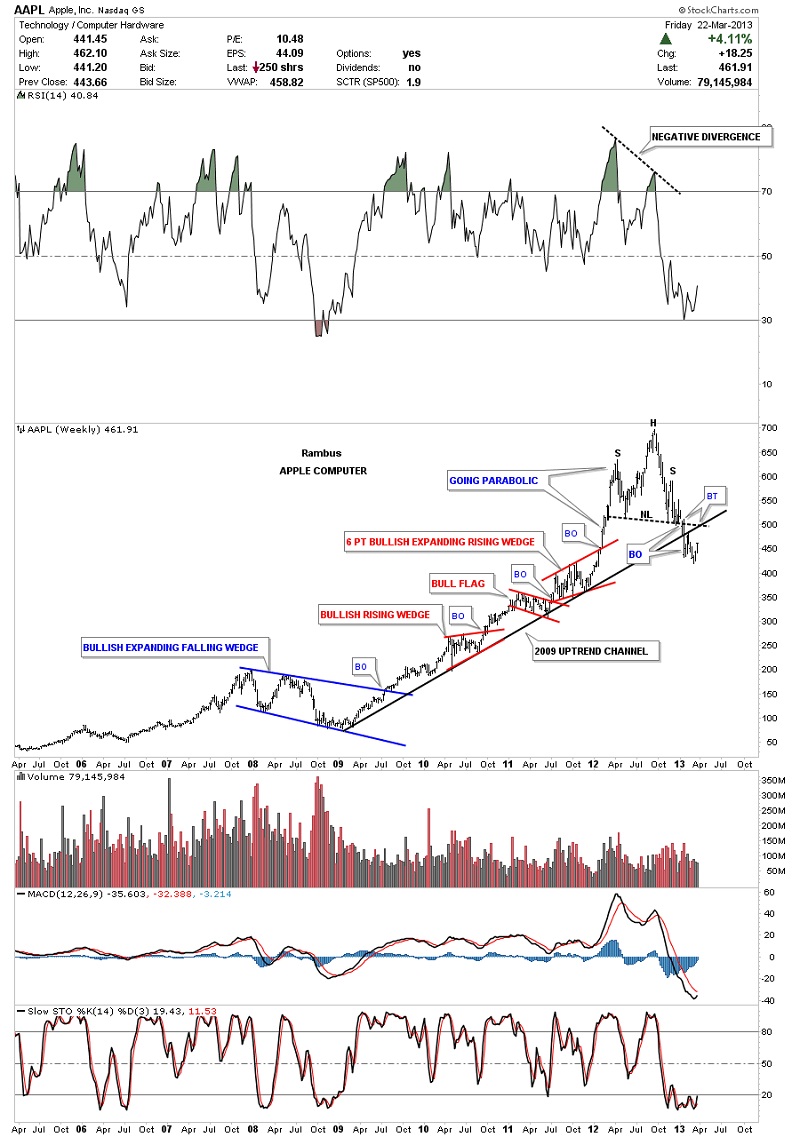
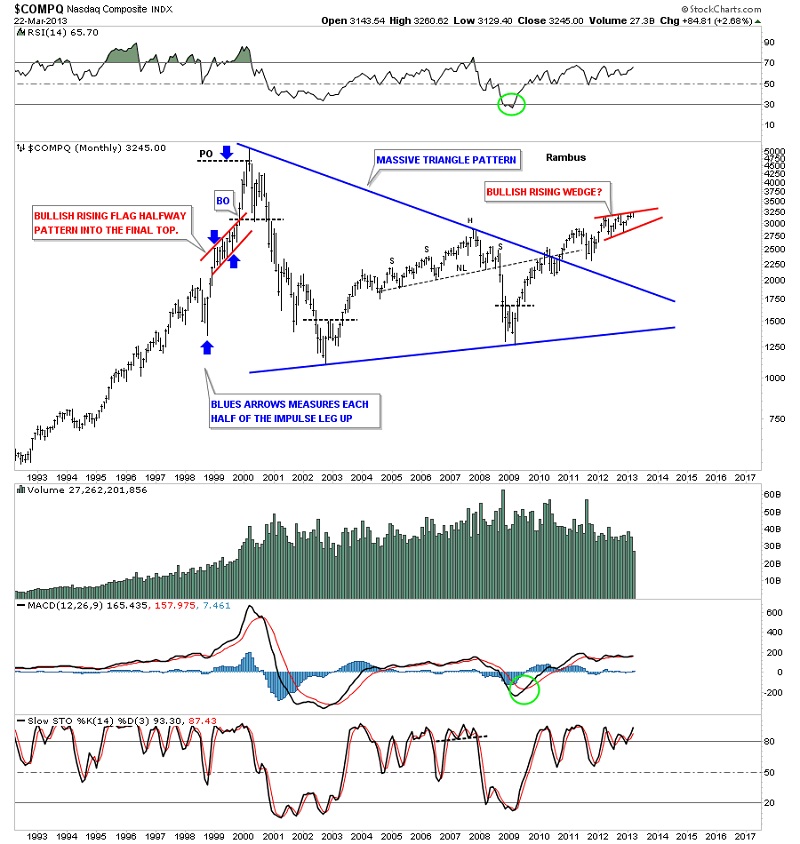

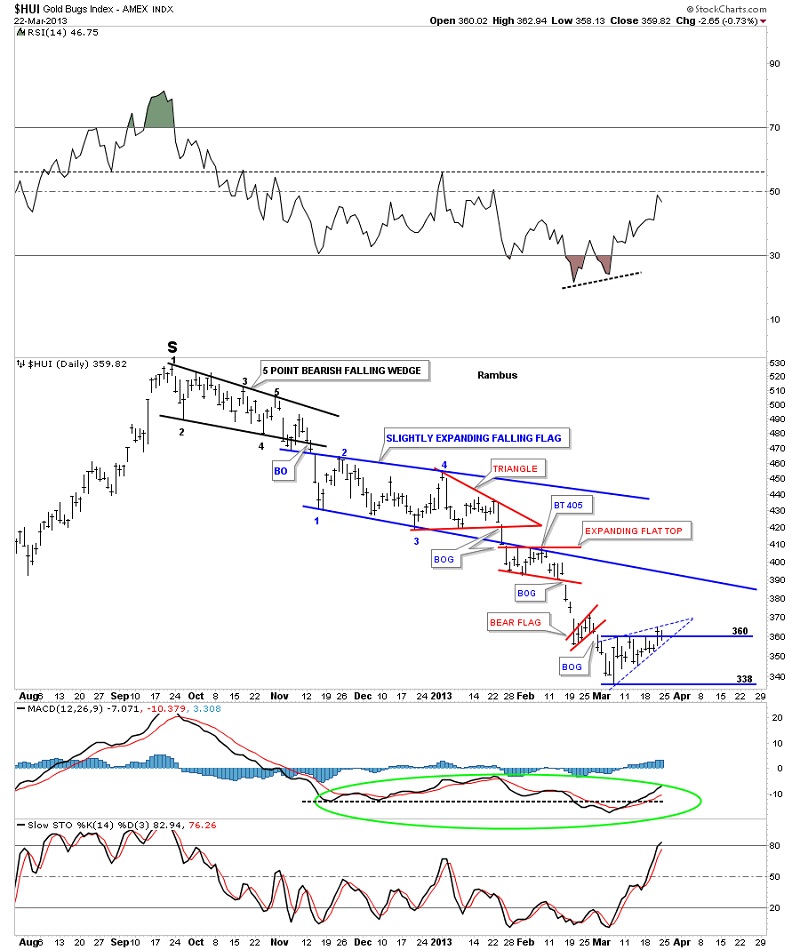
Deja Vu ?
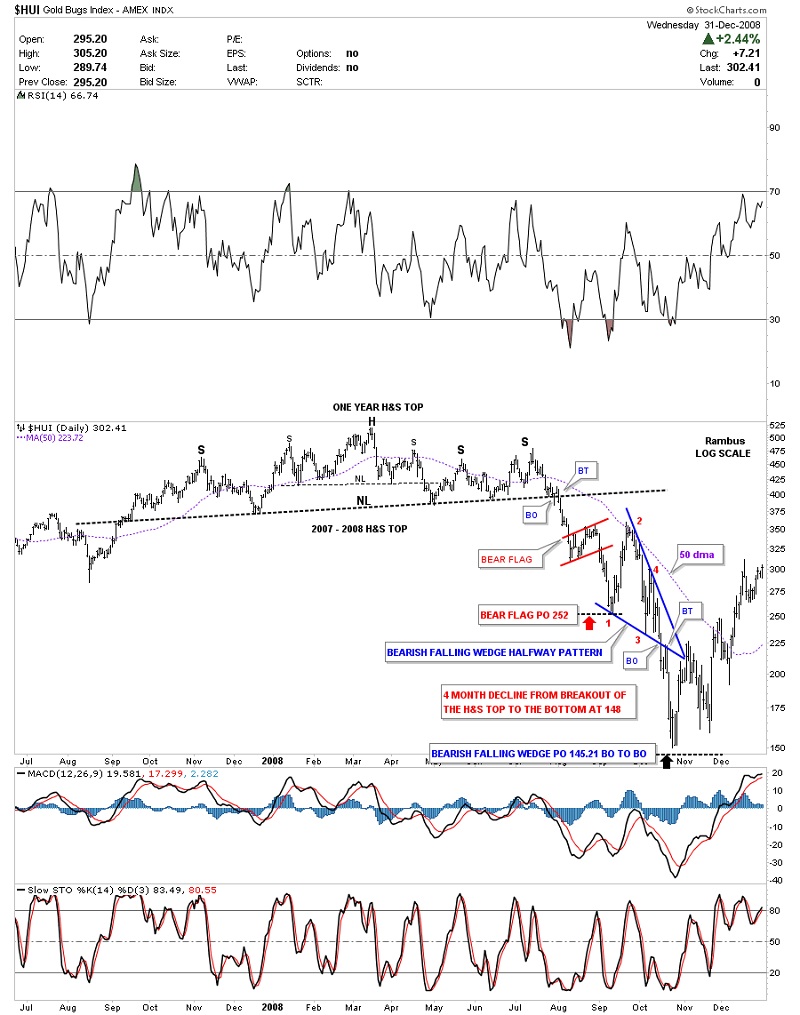



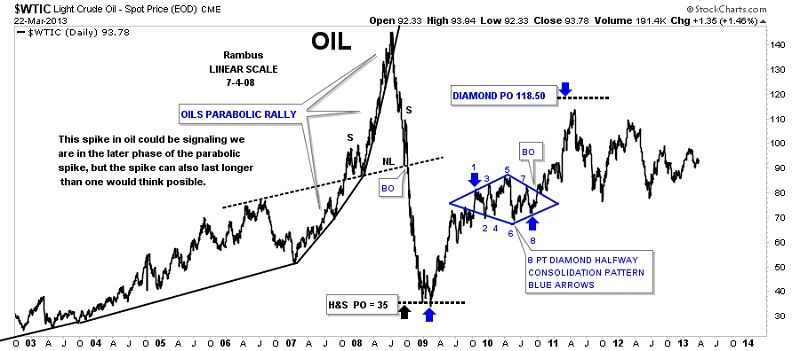





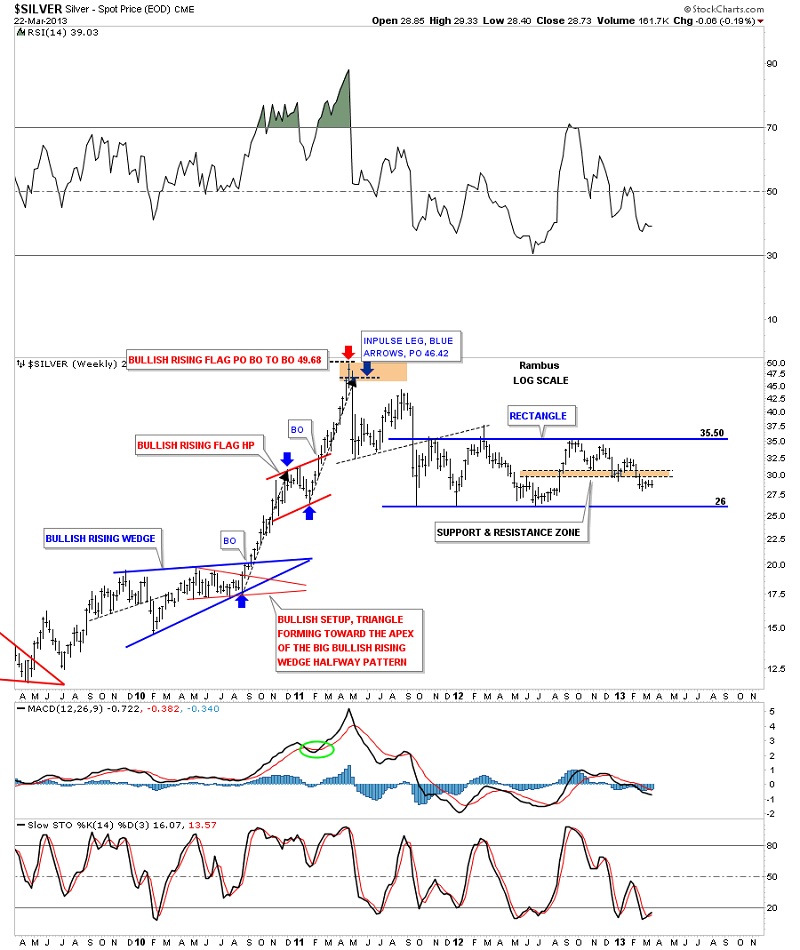

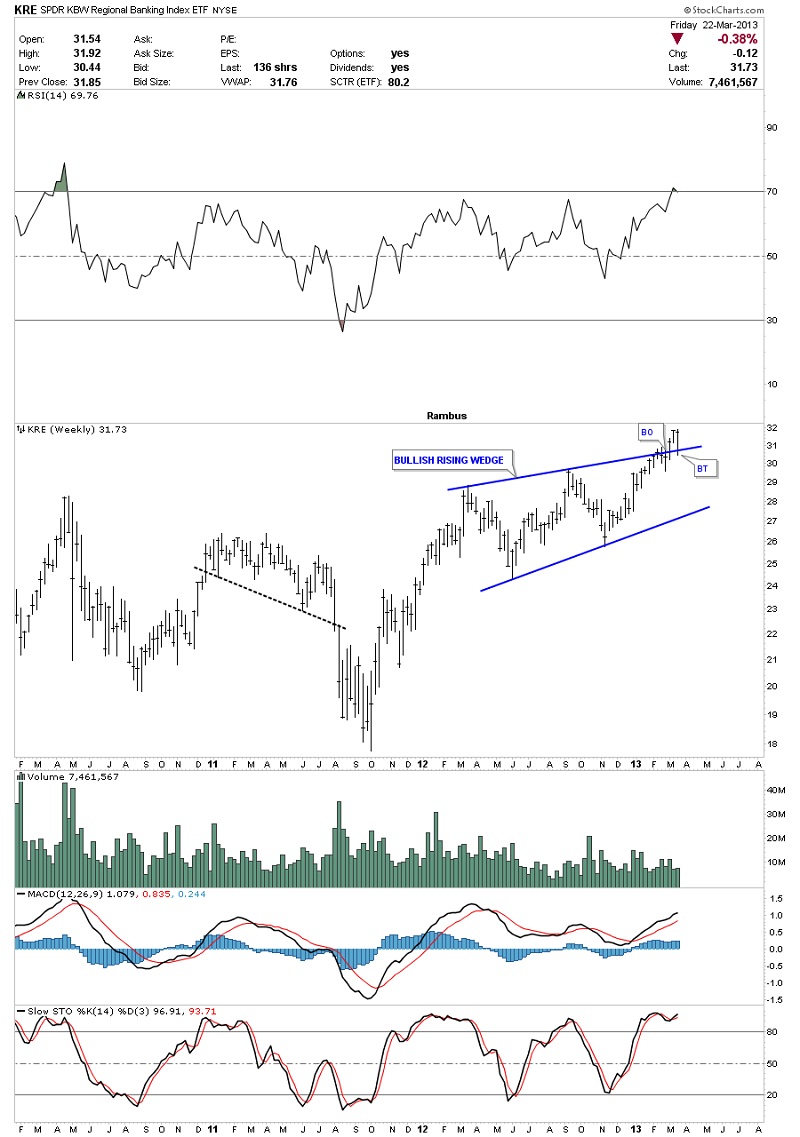











 Rambus Chartology is Primarily a Goldbug TA Site following the precious metals markets. Chartology is the Unique Blend of Technical Chart Pattern Identification and Market Psychology, Developed by Rambus During the Tech Mania of the late 1990s. His Early Training came the old fashioned way...Reading Edwards and McGee's Bible of Technical Analysis and spending years with a sharp pencil graph paper and ruler refining his skills and accuracy. Visit the Rambus Chartology website at
Rambus Chartology is Primarily a Goldbug TA Site following the precious metals markets. Chartology is the Unique Blend of Technical Chart Pattern Identification and Market Psychology, Developed by Rambus During the Tech Mania of the late 1990s. His Early Training came the old fashioned way...Reading Edwards and McGee's Bible of Technical Analysis and spending years with a sharp pencil graph paper and ruler refining his skills and accuracy. Visit the Rambus Chartology website at 










